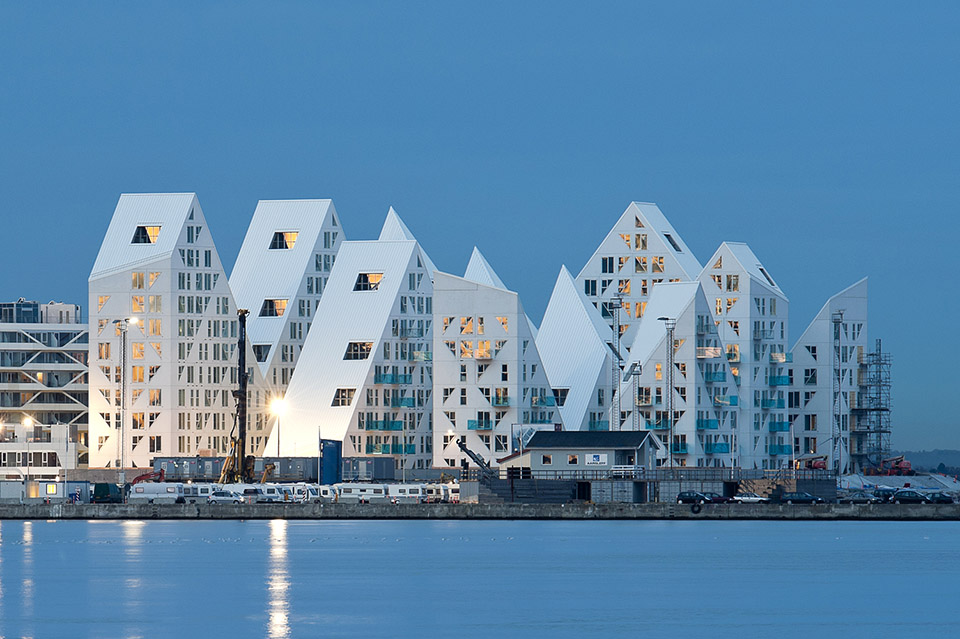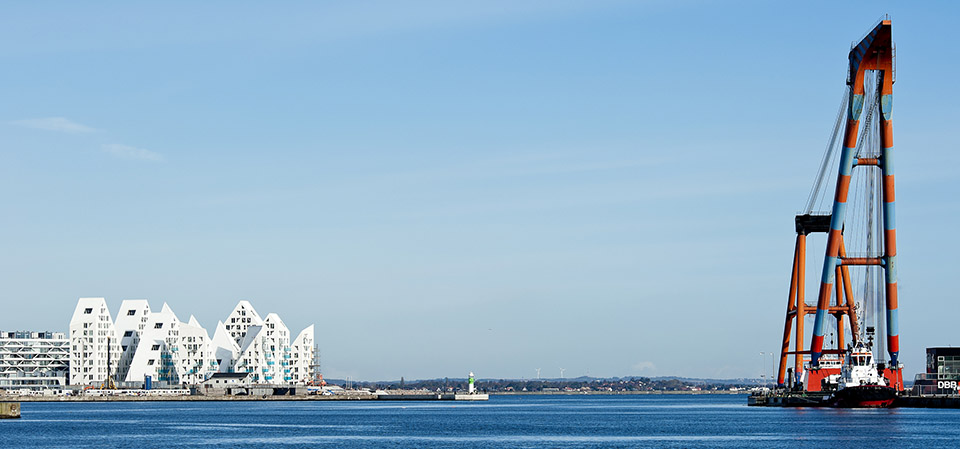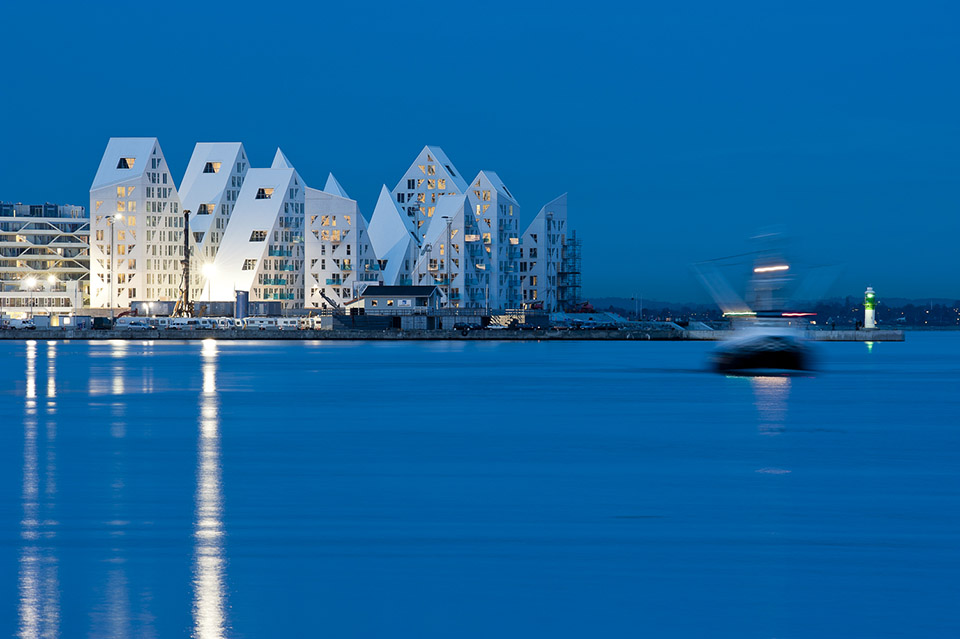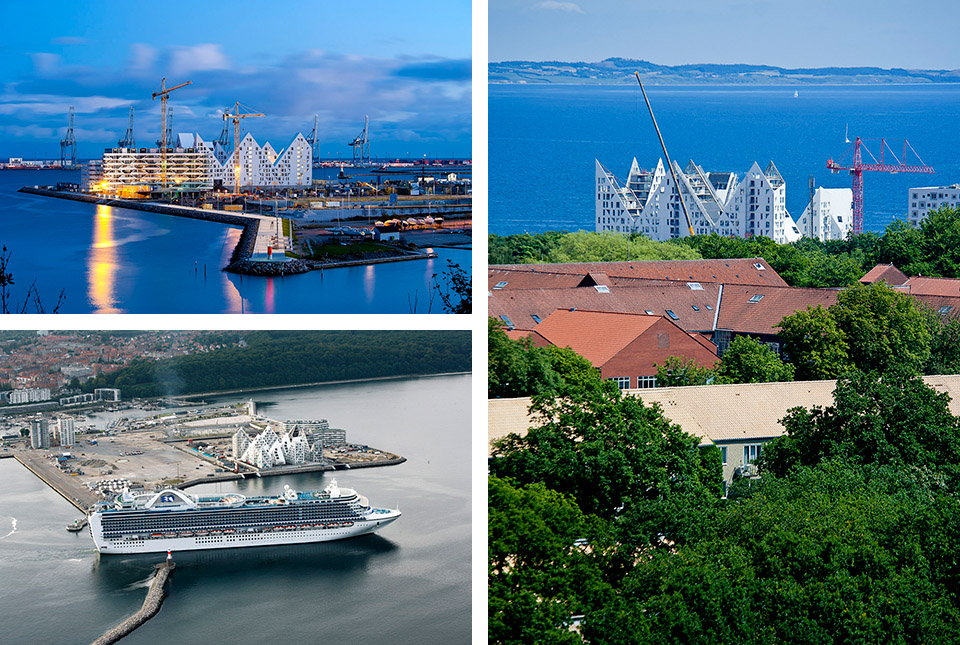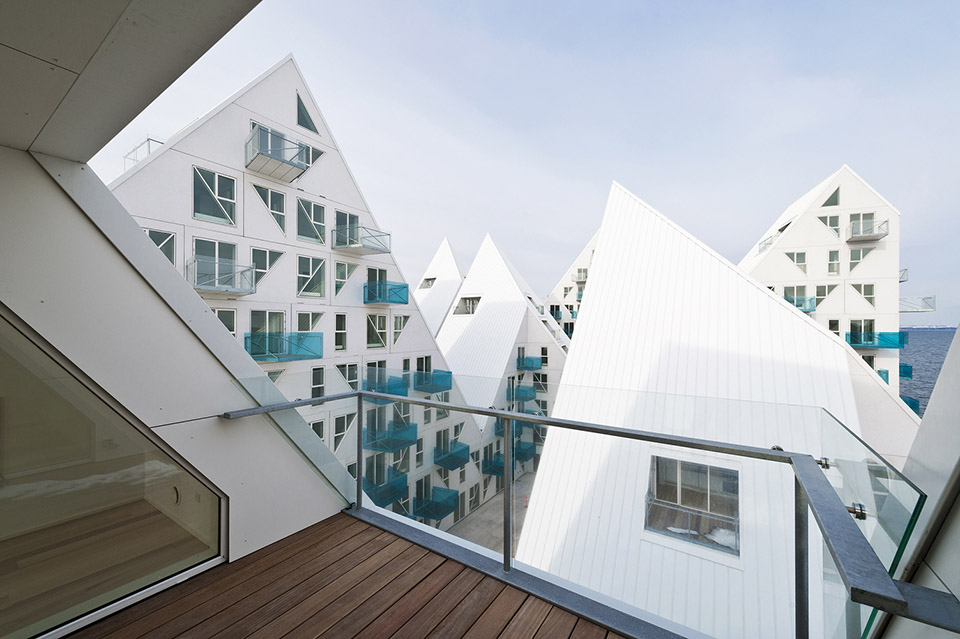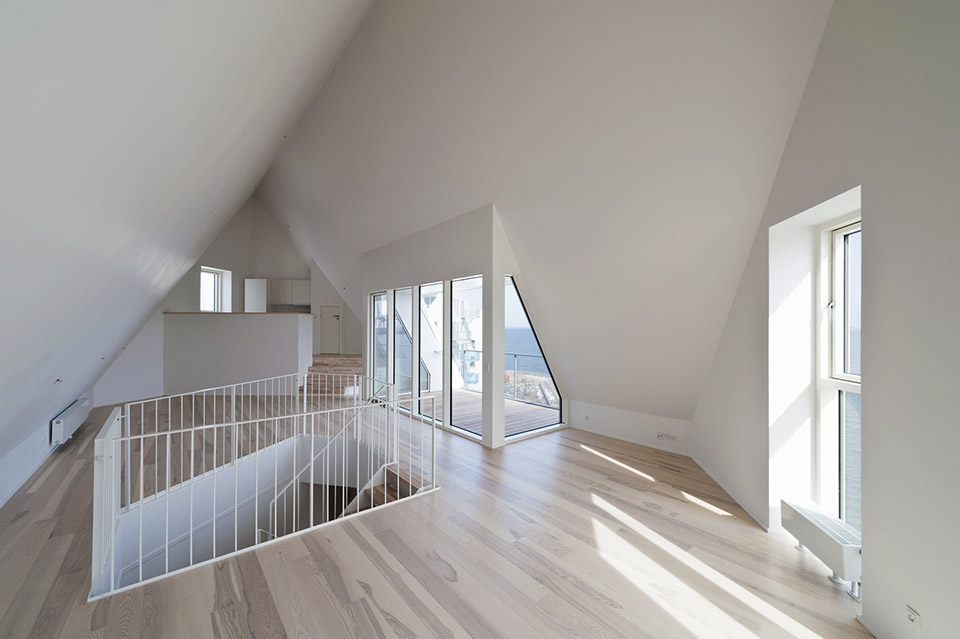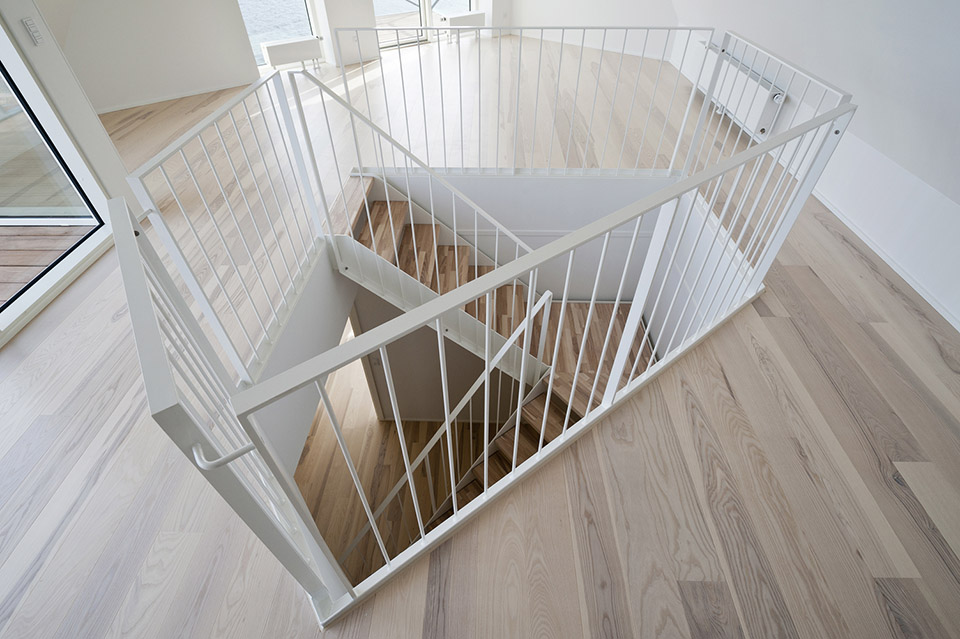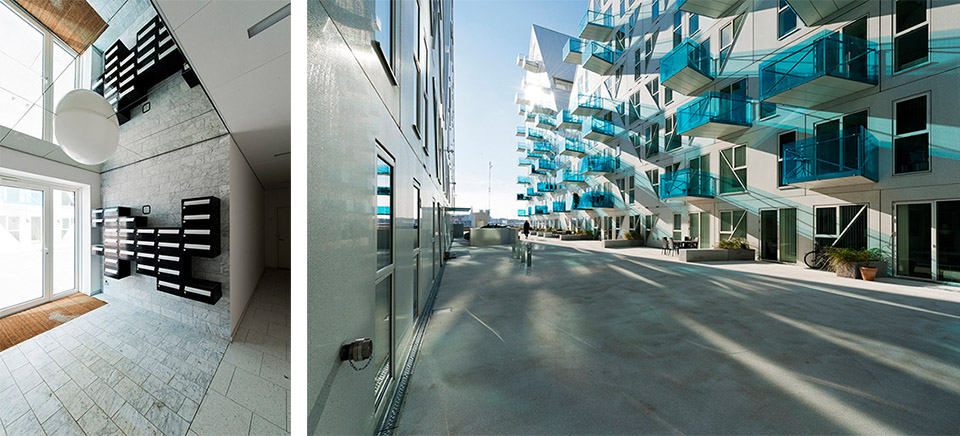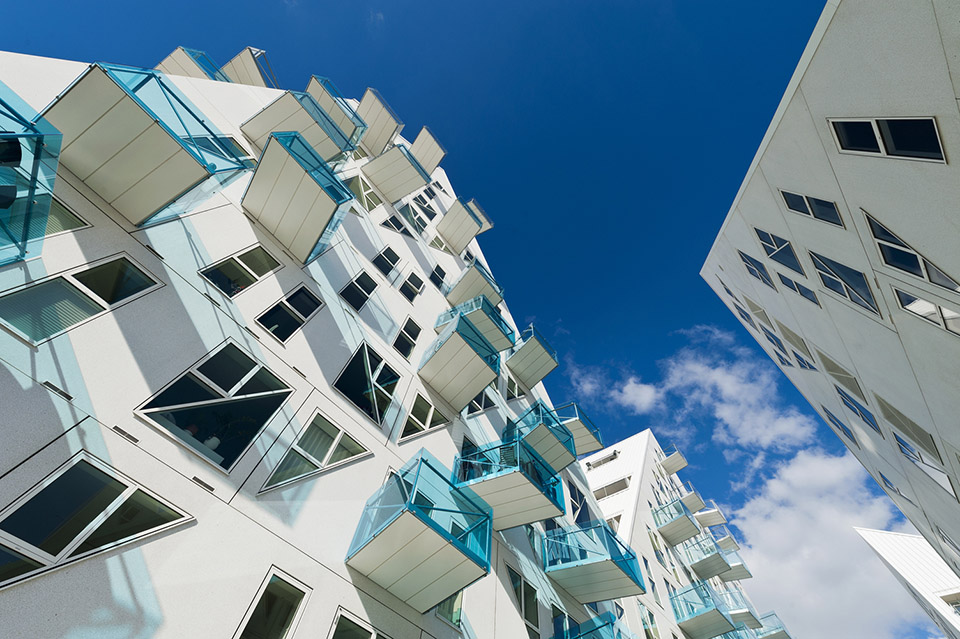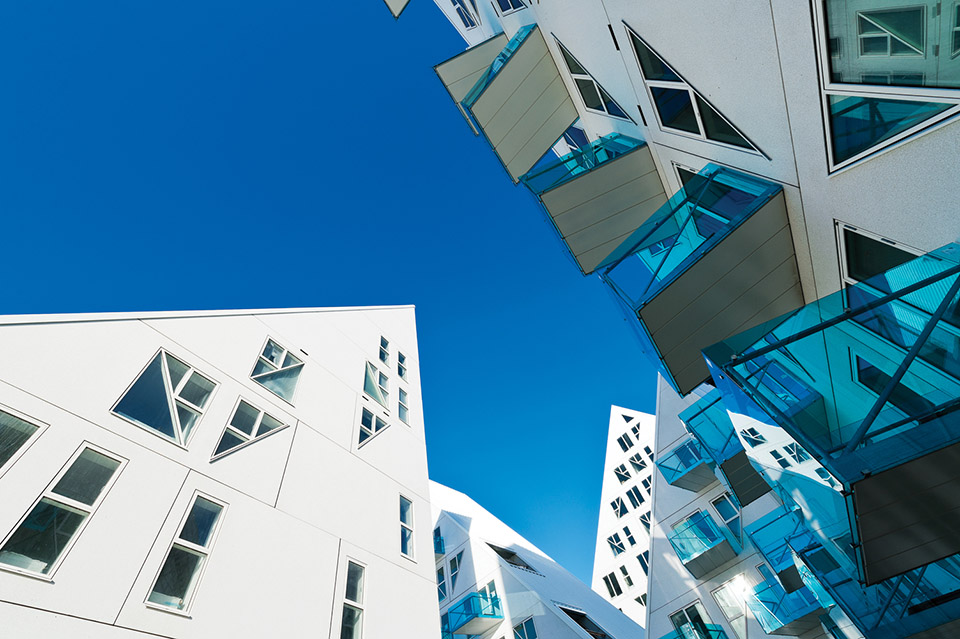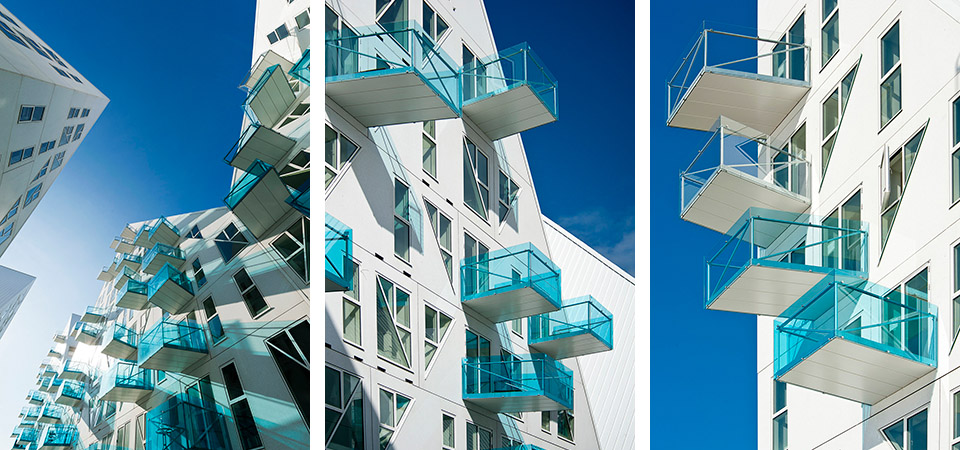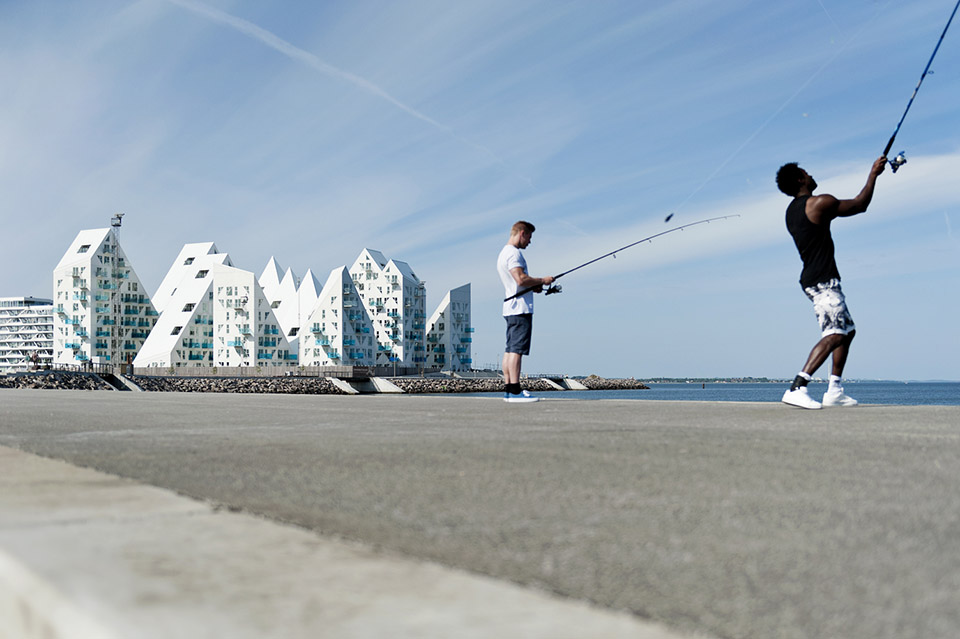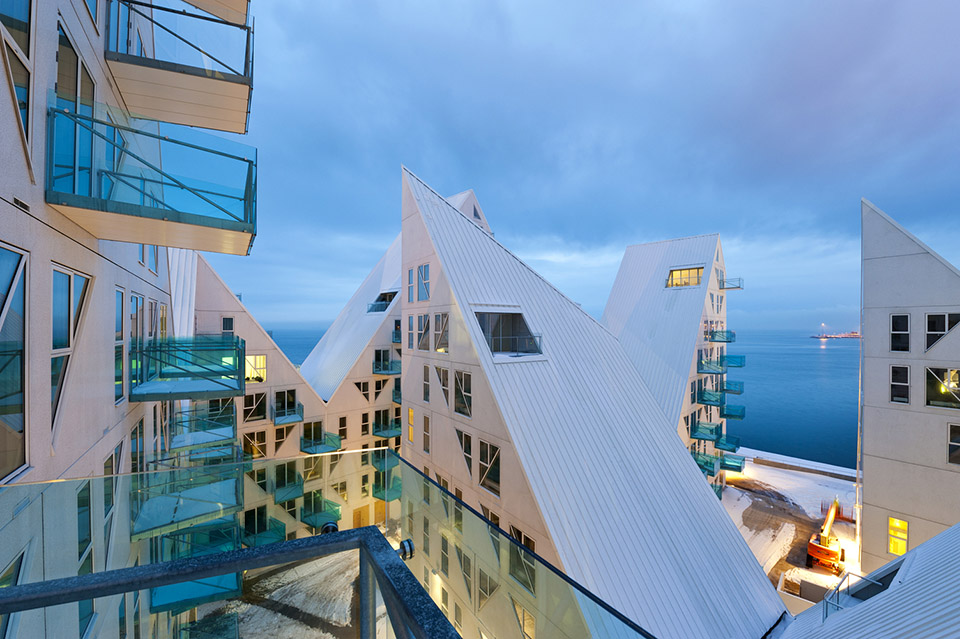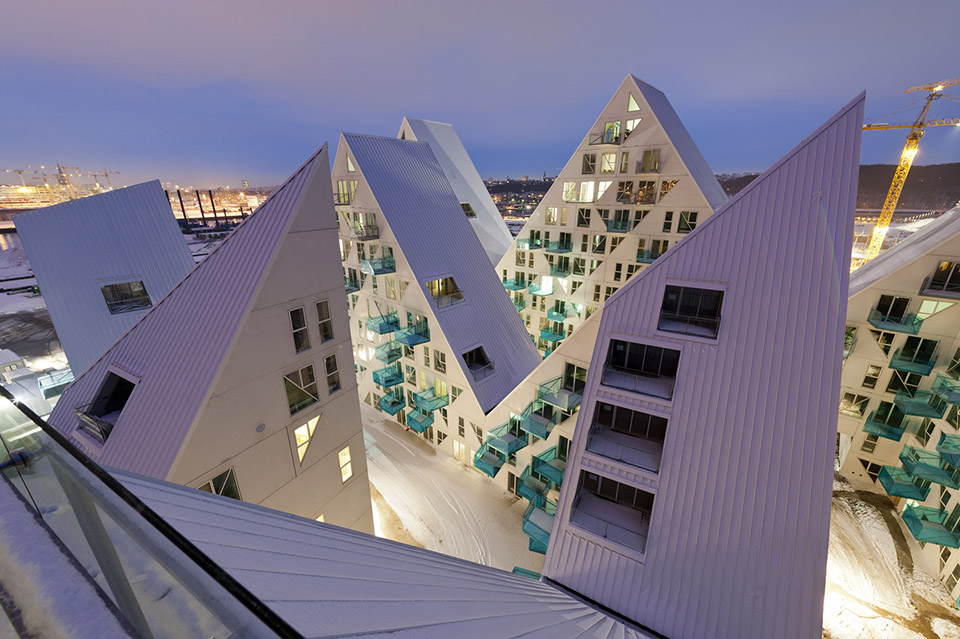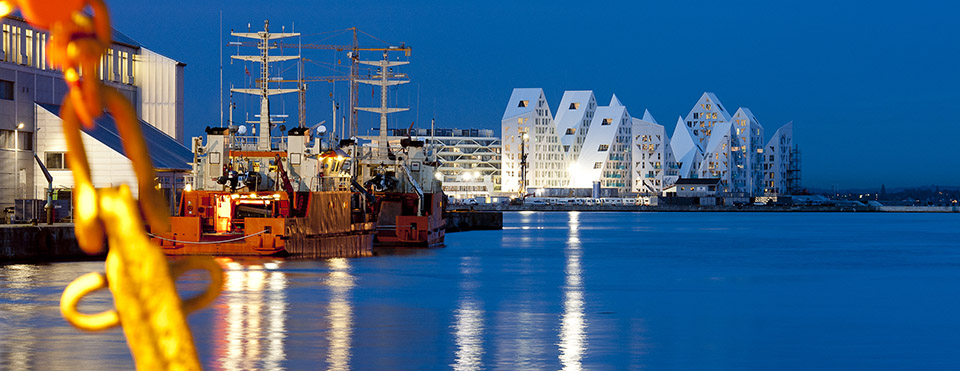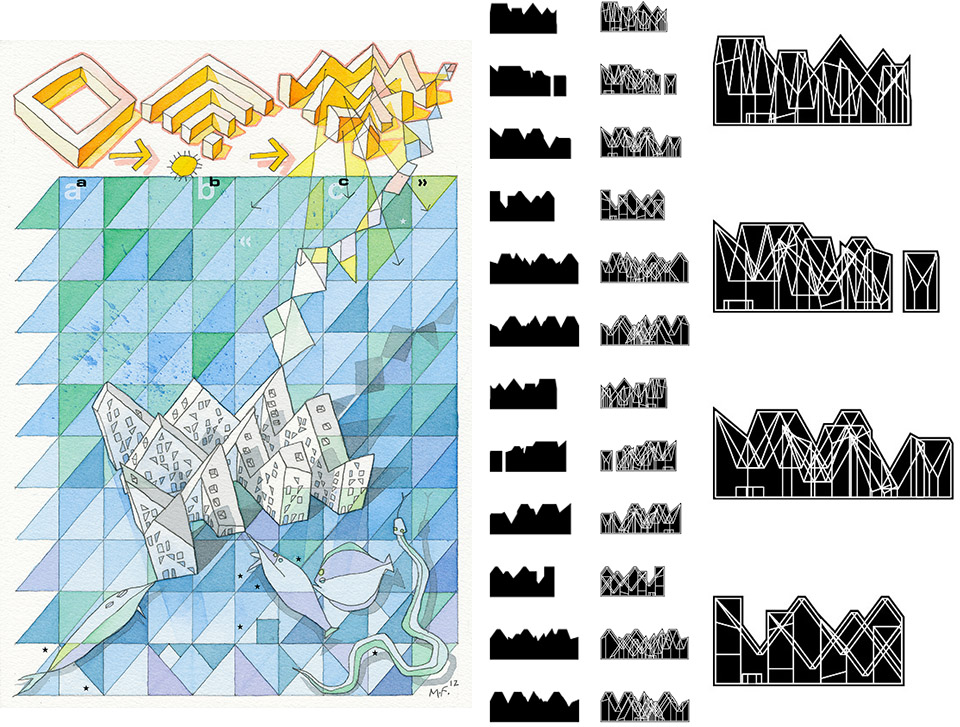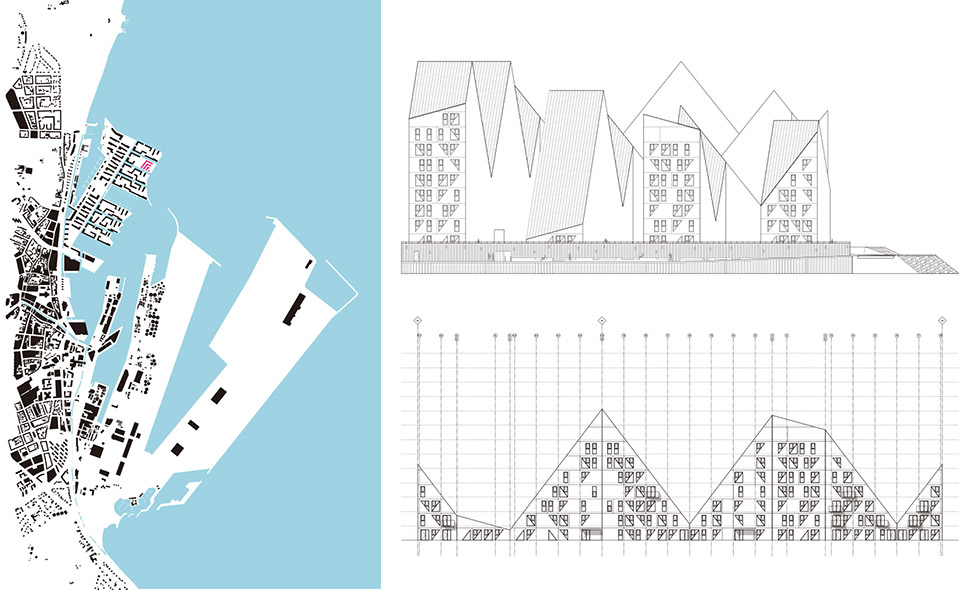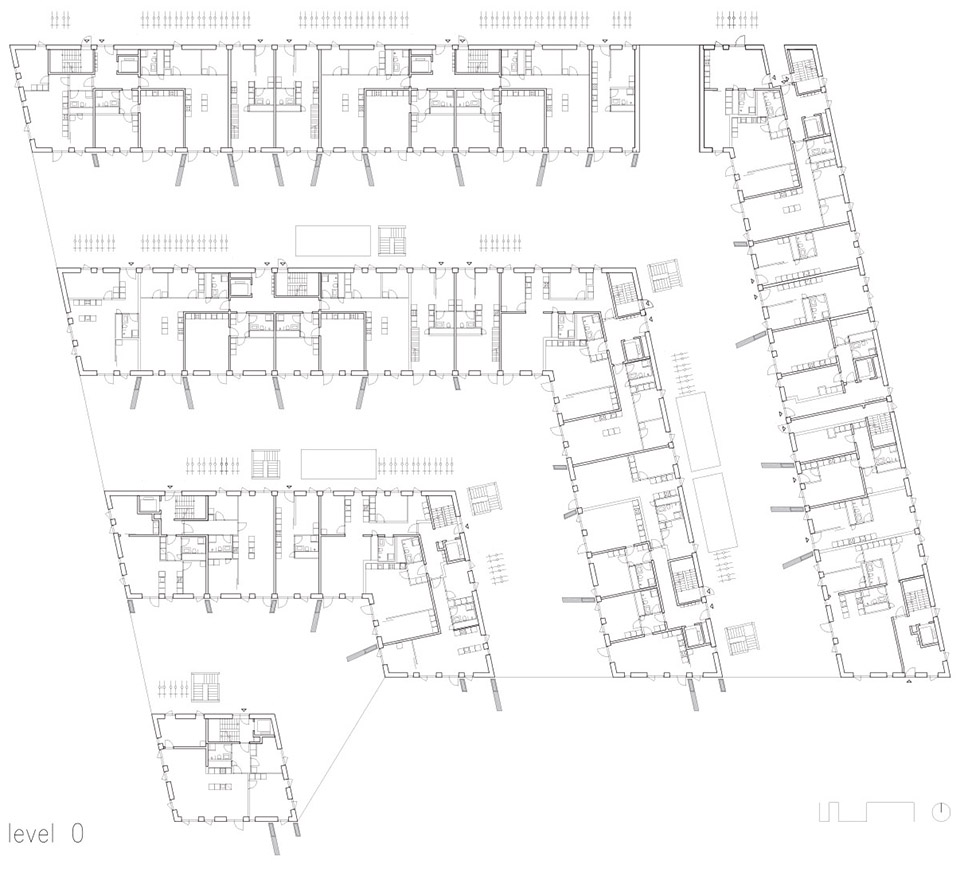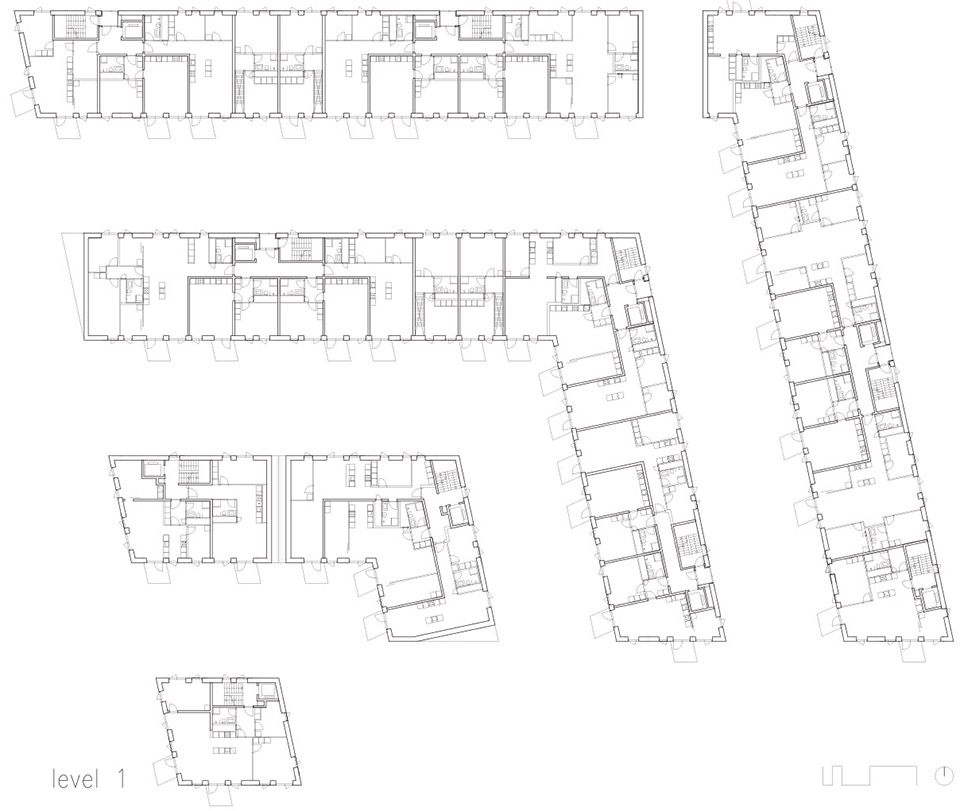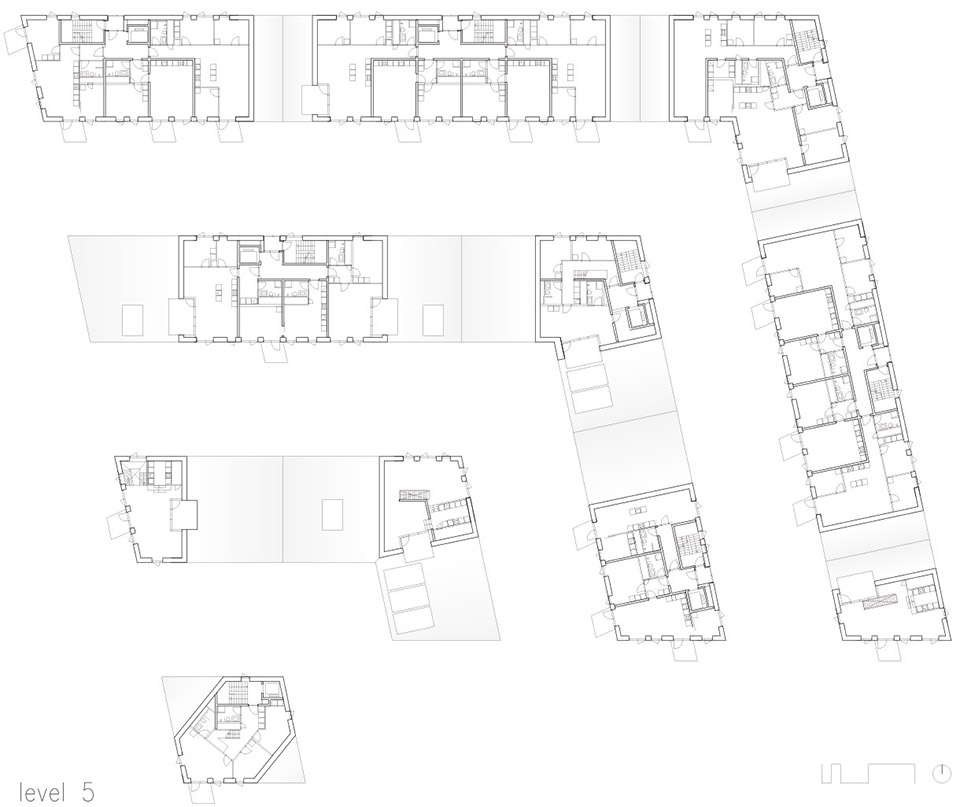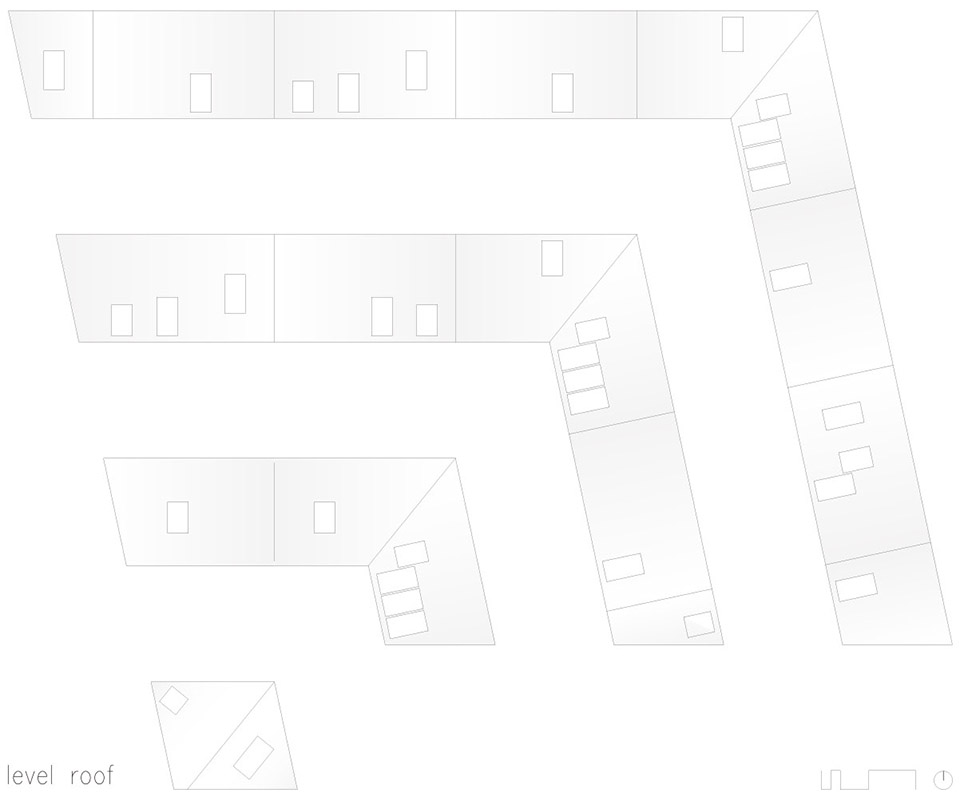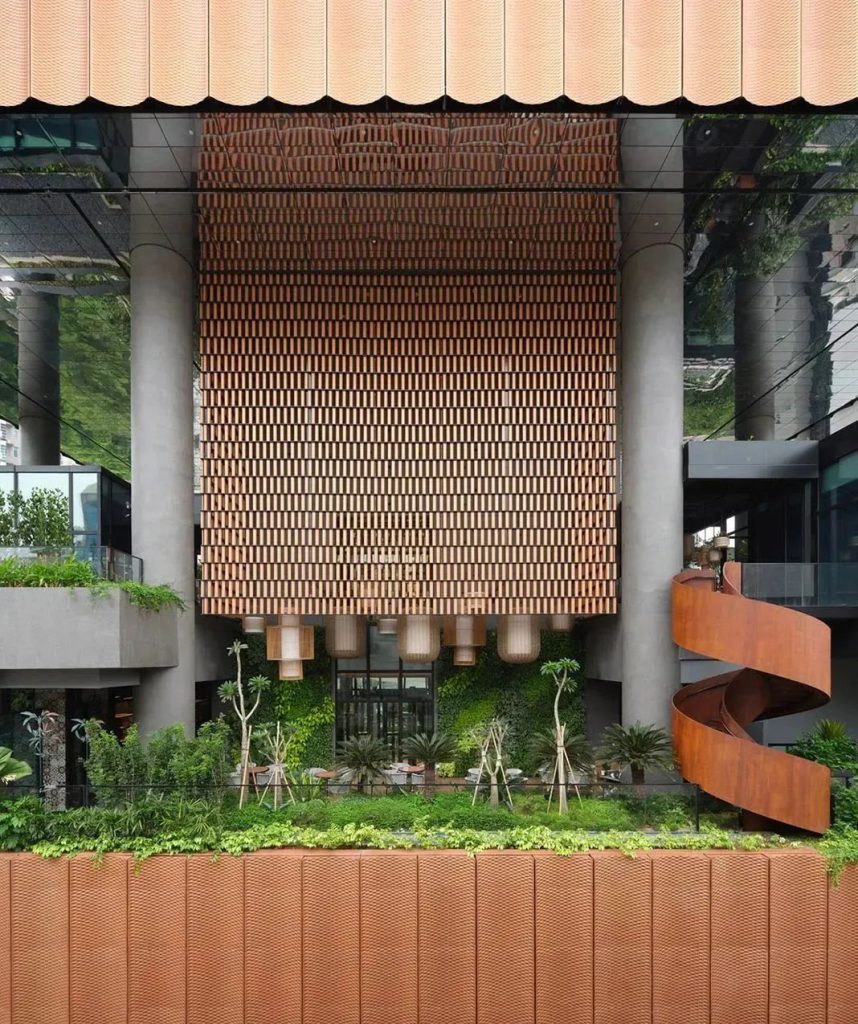冰山,是耸立在北欧奥斯陆的11峰白楼,它刺破了没有新意的天际线,在陆地与海洋间展示自己的雄姿,为奥胡斯海滨提供了208套公寓单元,成为港口改建开发中,活力新社区中的一个重要环节。
CEBRA建筑事务所的建筑师用创新和前瞻的思想设计了这个不平凡的住宅区,在建筑规划高密度要求的前提下进行挑战,实现了积极变化。首先建筑师将建筑朝着海滨向阳处排成4个L形状,然后用锯齿状线条切割这些体量,形成高低错落的锐角,使得建筑群看上去显示漂浮在海面上的冰山,同时因为体量被错开,位于后方大楼的具名也能看到海洋美景。建筑群设计为居民创造了开放,高品质,创新,与城市积极互动的社区。
蓝色玻璃栏板的阳台跳跃在建筑表面。建筑的形体变化剧烈,因此“山顶”上的户型是双层的,顶层稍小的空间用做阁楼。208套公寓的面积在55—227平方米不等。这个自住和出租相结合的公寓群激发了当地社区的潜力与活力。
The Iceberg’s sharply drawn silhouette with its 11 white peaks is a significant addition to the skyline of Aarhus – both from the landward and the seaward side. The project is located at a prime location on the outmost harbour front in Aarhus’ new quarter Aarhus East and consists of 208 apartments. Like many other worn-out industrial harbour areas, the former container port of Aarhus is being transformed into a vibrant new neighbourhood with a variety of functions – housings, educational institutions, offices, retail, sports and leisure.
The Iceberg is among the first completed projects in an area that in the future will be home to 7.000 inhabitants and provide 12.000 workplaces. Its totalsite area of 800.000 m2 makes it one of Europe’s largest harbour front city developments.
Rational considerations – extraordinary architecture
The team’s ambition and starting point for the building’s characteristic design was neither to create an iconic form nor to make a building that looks like an iceberg. Instead, the project originates from very rational considerations and classic architectural virtues. The inspiration for the Iceberg originated primarily from the site’s extraordinary location with spectacular views over the Aarhus Bay. Thus, the seemingly simple task was to maximize views and sunlight conditions for every single apartment and at the same time respect the inland urban context.
By turning well-known architectural elements on upside down and combining them in different ways this rational basic considerations result in an extraordinary and forward-thinking residential complex.
In order to obtain these positive features throughout the entire complex the design team had to challenge the restraints imposed by the district plan, including the high building density required and the relatively low permissible building height.
Instead of following the master plan, which was dominated by traditional closed building blocks with central court yards, the Iceberg is laid out as four L-shaped wings, where the spaces in between open towards the water. In order to obtain optimal daylight conditions and views over the bay, these angled building volumes are cut up by jagged lines. By remaining well below the height limit at many points while exceeding it at others the architects succeeded in keeping the projects average height within the permissible limits.
The roofs rise and fall into peaks and valleys, which create visual passages across the individual volumes – like floating icebergs that constantly refract one’s gaze. Thus, even the back wing’s residents can enjoy the view and generous natural lighting. The principle of dividing each building into tops and valleys contributes to adapt the scale of the building volumes to both the surroundings and the interior spaces. Instead of being considered as a block turning inwards the complex is experienced as an open, extrovert structure, creating more architectural appeal.In selected areas the structure of the building is pressed down towards street level to create a harbour oriented character and scale, which will interact with the future sea front promenade and public spaces. In other areas the structure is pulled upwards to create more urban qualities, which are oriented towards the city and the Iceberg’s landward neighbours. City and harbour meet in one common idiom.
Social diversity
The varying and spectacular forms that derive from this simple algorithm resulted in a spatial complexity, which made it possible to fit a varied range of ifferent dwelling types within the complex – the outer geometry changes upwards through the building and consequently also from one apartment to the next, ranging from 55 to 227 m2 including two-storey ‘town houses’ and affordable smaller flats as well as exclusive penthouses in the peaks. The variety of residences with different balconies, shapes and orientations as well as the combination of owner-occupied and rented flats aim at creating socially diverse urban surroundings that form a lively local community: the building complex becomes a neighbourhood instead of a mere series of housing blocks.
FACTS & CREDITS
Commission: Private
Category: Residential
Client: PensionDanmark
Location: Mariane Thomsens Gade, Aarhus, DK
Year: 2008 – 2013 – completed
Purpose: Housing complex with 208 apartments
Size: 22.000 m² new building
Awards: MIPIM Award 2013,
Architizer A+ Award 2013
Architects: CEBRA, JDS, SeARCH, Louis Paillard
Contractor: NCC
Engineers: Tækker R.I., Hamiconsult
Photographer: Mikkel Frost / CEBRA
项目来源: CEBRA
